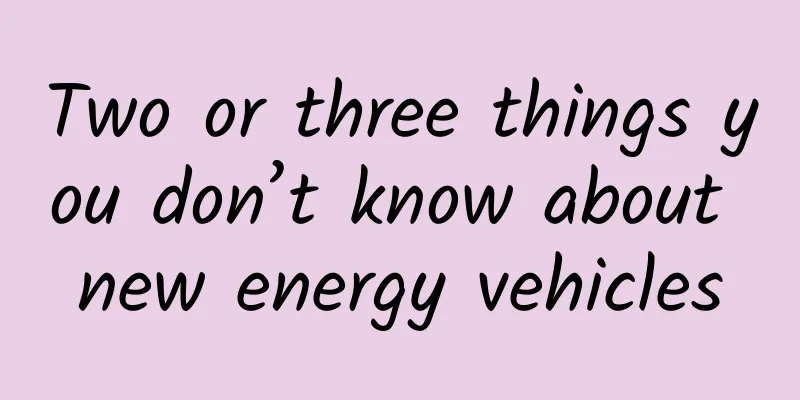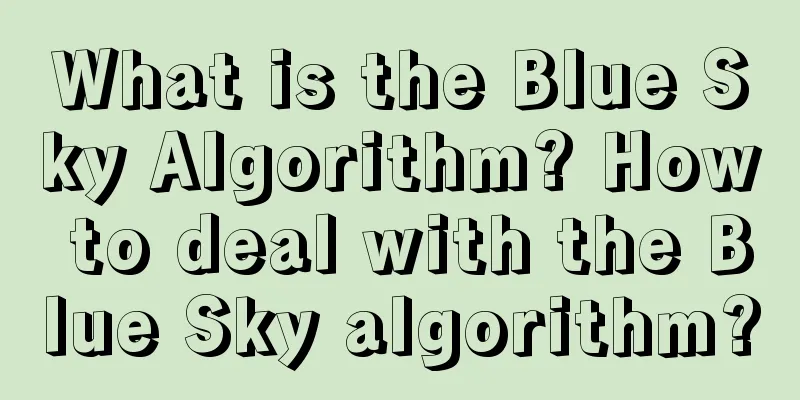Two or three things you don’t know about new energy vehicles

|
Will new energy vehicles be the ultimate trend of the Chinese auto market? I think so. With the rapid development of science and technology, the inclination of national policies, and the specific auto market environment in China, new energy vehicles will become a trend. From the pure electric and plug-in vehicles led by self-owned brands such as BYD, to the hybrid and plug-in models of joint venture brands such as Toyota and Honda, more and more automakers are paying attention to the Chinese new energy vehicle market. The most subsidized plug-in and pure electric vehicles According to the definition, new energy vehicles include pure electric vehicles, extended-range electric vehicles, hybrid vehicles, fuel cell electric vehicles, hydrogen engine vehicles, and other new energy vehicles. Now, the new energy vehicles we often see in the Chinese market are divided into three types: plug-in hybrid vehicles, oil-electric hybrid vehicles, and pure electric vehicles. Let's talk about pure electric and plug-in vehicles first. Plug-in vehicles must be charged externally at places with charging piles. During short-distance driving, they are pure electric vehicles. They do not exceed the maximum range specified by them, and they do not consume oil. During this period, they achieve zero tail gas emissions. But once the electricity is used up, they will drive in hybrid mode, mainly based on internal combustion engines, and will charge the battery at appropriate times. Compared with normal vehicles, they will have an extra engine. Compared with plug-in vehicles, pure electric vehicles can be said to be new energy vehicles in the true sense, and electric drive and control systems are the core of electric vehicles. Moreover, the country now has the largest subsidy for pure electric vehicles and the strictest indicators. It truly achieves zero tail gas emissions, is more environmentally friendly, and responds to the call of the country. Here, BYD, as a leader in China's new energy industry, is quite competitive. And if we talk about the model that BYD is famous for, it must be Tang. The "542" strategy at that time was well-known to everyone. It accelerated from 0 to 100 km/h in 4.9 seconds, had a four-wheel drive system, and fuel consumption was less than 2L/100km. It made consumers at that time shine. Recently, the Qin Pro new energy model was launched, among which the Qin Pro EV500 has a comprehensive working range of 420km, and the Qin Pro DM version has a pure electric mode range of 80km. It is aimed at the compact car market. Toyota's hybrid technology Hybrid electric vehicles are different from the previous two models. They do not need to be charged by an external power source, but can collect the energy generated by braking and the energy of the generator to charge internally. It can be driven entirely by electricity when driving at low speeds, and can switch to gasoline drive at any time when driving at high speeds, providing more fuel-saving methods. In terms of hybrid power, Toyota's technology can be said to be the originator. Toyota has actually introduced this technology for nearly 20 years. If we start counting from the production of hybrid vehicles in the form of HEV components imported from Japan in 2005, Toyota has introduced this technology to China for 14 years. Toyota Prius, the representative of Toyota's hybrid models, has developed to the fourth generation, of which the second and third generations were introduced into China. However, the price of Prius at that time was about 260,000 yuan, and not many people would pay for it ten years ago. But according to Toyota's current plan to promote dual-engine technology in China, in order to allow more Chinese consumers to enjoy Toyota's hybrid dual-engine power technology, on the premise of fully ensuring quality, the core components of the hybrid system - drive batteries, motors, power control assemblies (PCUs) and Atkinson cycle engines are produced locally, thereby greatly reducing the cost of hybrid vehicles. We strive to achieve the goal of "making more consumers willing to choose the Dual Engine even compared with traditional power models of the same level." So much so that today, ten years later, Corolla, Levin and Camry have good sales in both the A-class and B-class car markets. Toyota's "compromise" But compared with plug-in and pure electric, Toyota's hybrid vehicles in the past two years have fatal "shortcomings", one of which is the subsidy policy (pure electric range of 50 kilometers). Toyota's hybrid products in the past were mainly HEV, but the national subsidies tended to plug-in PHEV, but Toyota's products only have 11 miles to 35 kilometers, plus some regional subsidy standards, such as Shanghai (Shanghai is the largest hybrid market, with unique advantages in formulating rules) There is an additional subsidy of 14,000 yuan for PHEV, which must meet the engine displacement less than or equal to 1.5L (for Toyota's Atkinson engine), hybrid fuel consumption less than or equal to 5.9L per 100 kilometers, and fuel tank capacity less than or equal to 40L. So many consumers are deterred from Toyota's Lelink and Corolla when choosing electric vehicles, and finally choose domestic independent brands with increasingly mature technology. But things are different now. At the Guangzhou Auto Show at the end of last year, Toyota's Corolla Lelink PHEV was officially unveiled, with a pure electric range of 55 kilometers (entirely for policy subsidies). Not only that, this time the Corolla PHEV provides three driving modes, namely pure electric (EV), hybrid (HEV), and pure electric + hybrid (EV+HEV). When the vehicle starts and drives at low speeds, the vehicle is mainly driven by the motor (EV mode), and supports pure electric driving at speeds of 120km/h and below; when the vehicle accelerates, the one-way clutch is triggered, and the car enters the HEV mode. The engine/motor will cooperate with the main motor to drive. As long as the power is sufficient, the engine will not intervene. When the power is insufficient or when driving at high speed, the internal combustion engine intervenes and works with the motor to achieve higher power output. Kinetic energy recovery is the same as the previous card hybrid. In braking and deceleration modes, kinetic energy recovery can be completed to charge the battery. One thing that must be said is that this time the Corolla PHEV is 150 kg heavier than the Corolla Hybrid, but the fuel consumption has not increased. It is the same as the Corolla Hybrid at 4.2L per 100 kilometers (the comprehensive working conditions are 1.2L/100 kilometers), which can be said to be a highlight. Summarize Having said so much, the advantages and disadvantages of the three new energy vehicles are still quite obvious, and also for different cities, such as plug-in, the number of charging piles, especially the number of charging piles in first- and second-tier cities (there are more charging piles in third- and fourth-tier cities), and Toyota's hybrid and the plug-in that will be launched soon, the price relative to domestic brands after subsidies is also a problem that must be considered (oil-electric hybrid technology is still quite expensive). So if you really choose a new energy vehicle, you must consider the city you are in, policy subsidies, and brand premiums, and choose a new energy vehicle that you really think is suitable and brings convenience to travel. As a winner of Toutiao's Qingyun Plan and Baijiahao's Bai+ Plan, the 2019 Baidu Digital Author of the Year, the Baijiahao's Most Popular Author in the Technology Field, the 2019 Sogou Technology and Culture Author, and the 2021 Baijiahao Quarterly Influential Creator, he has won many awards, including the 2013 Sohu Best Industry Media Person, the 2015 China New Media Entrepreneurship Competition Beijing Third Place, the 2015 Guangmang Experience Award, the 2015 China New Media Entrepreneurship Competition Finals Third Place, and the 2018 Baidu Dynamic Annual Powerful Celebrity. |
Recommend
Not all sharks are so vicious!
Key Points ★ Even great white sharks don’t like t...
The 120,000-yuan Galaxy E5 is competing closely with BYD Song, aiming at the sniper of compact joint venture SUVs
BYD's sales in June exceeded 340,000 units, m...
The number of reservations in 24 hours exceeded 4.3 million. What are the highlights of Meizu Blue 5?
On October 31, at the "Tmall Meizu Blue Nigh...
Is the agency fee for Qitaihe Snack Mini Program high? Qitaihe snack applet agency fee
Qitaihe snack app agents are generally divided in...
Luoyang SEO Training: How to solve the problem of simultaneous decrease in website search volume and spider crawling frequency
In the daily operation of the website, the follow...
The Second Brain: Gut Microbes
Friends who have completed nine years of compulso...
Crisis PR Guide for the Catering Industry
Whether you watched this year’s 315 Gala or not, ...
How to effectively improve product user retention rate?
In the Internet age, users are crucial to product...
Toutiao Advertising Manual, let your information flow ads be on the "headlines"!
Recently, CB Insights, a well-known American vent...
App Promotion: The Ultimate Strategy for Paid Promotion on Xiaomi Information Platform
The following is a summary of the resources of Xi...
ARKit & OpenGL ES - ARKit principle and implementation
Principle If you want to learn more about OpenGL ...
Can low temperatures also cause burns? Be careful when using these "heating tools" on children!
cold, cold, cold, cold, cold, cold … This wave of...
Searching for the original ribosome and recreating the moment when life first emerged 4 billion years ago
The evolution of life on Earth is a long waltz of...
China Passenger Car Association: The total number of public charging piles in February 2025 will reach 3.83 million, a year-on-year increase of 64%
According to the data analysis of the China Charg...
Mobile phones are so far ahead, it turns out that satellites are the scapegoat
Comes with satellite phone! Ahead of the curve! T...









